
It was Callum James over at Front Free Endpaper who sparked my interest in the work of Albert Wainwright. Since then I’ve become a fan, and acquired a small portfolio of his travel sketches and watercolours.
Wainwright was born in 1898 in Castleford, West Yorkshire, and entered Leeds School of Art in 1915. A fellow pupil at Castleford School was sculptor Henry Moore. Both benefited from the support of the same encouraging art teacher, Alice Gostick. Wainwright was an excellent draughtsman, equally at home with book illustration, set design and costuming for the stage. He designed sets and costumes for the Leeds Art Theatre, for school plays at Castleford and for his own plays.
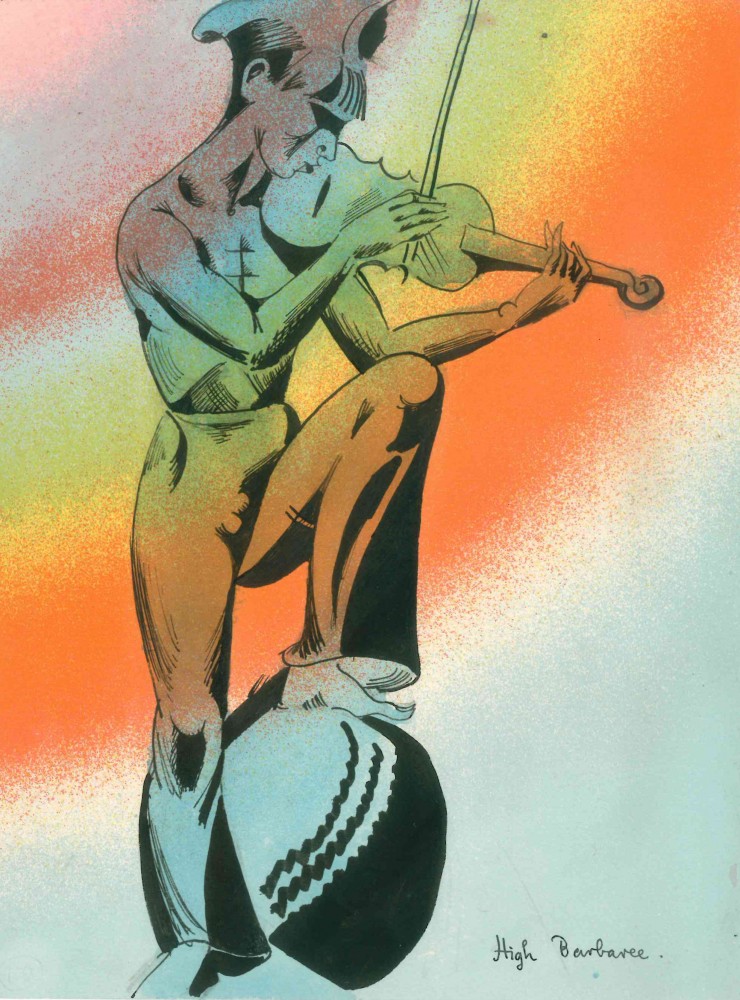
Albert Wainwright, ink drawing for High Barbaree
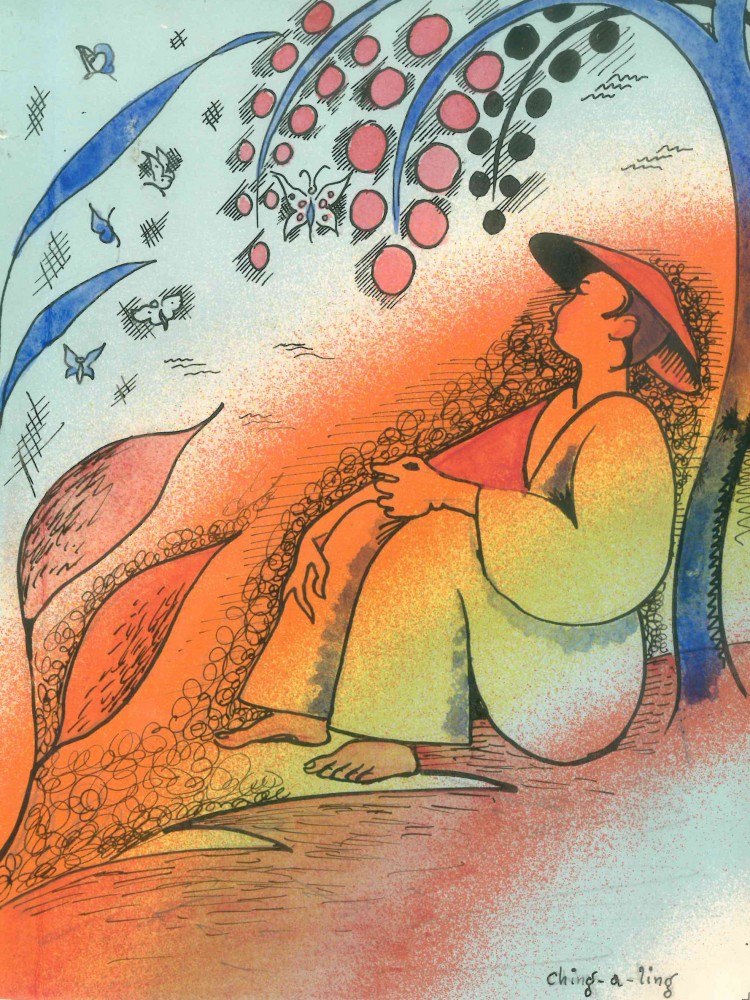
Albert Wainwright, ink drawing for Ching-a-Ling
He travelled to Germany frequently throughout the twenties and thirties, sometimes with school groups, sometimes unencumbered. His travels, his knowledge of German and German literature, recall a more outward-looking Britain since declined to monolingualism. His sketchbooks constitute a sharply observed, highly coloured record of those inter-war decades, when the Wandervogel movement was at its height.
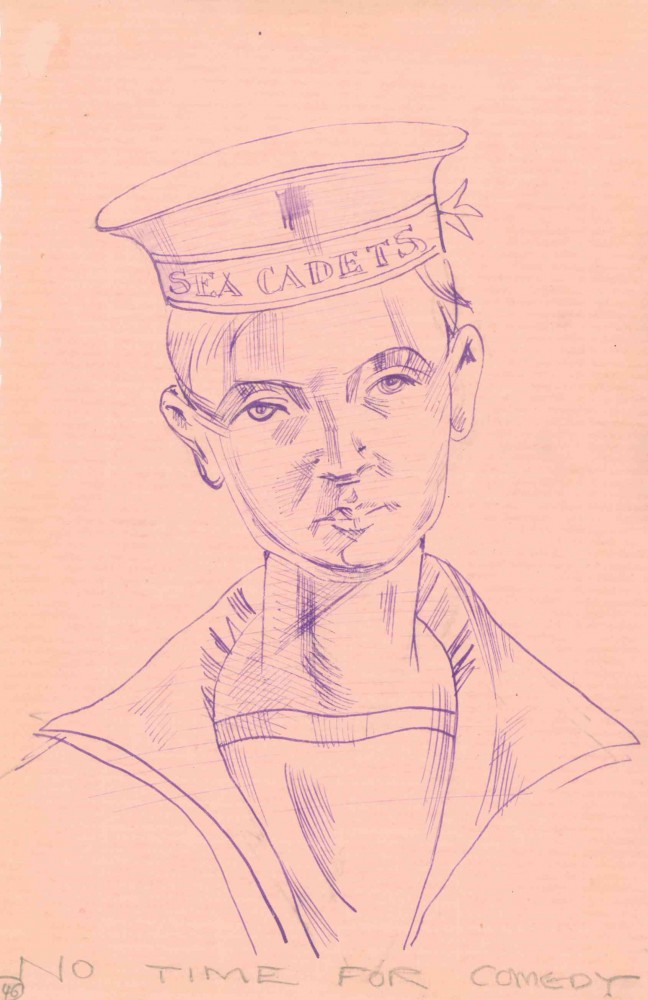
Albert Wainwright, No Time for Comedy
Wainwright’s ink line is playful, quick, his sense of colour fauvist and theatrical. There’s a good deal of art deco in the way he mixes illustration, drama and design. His travel sketches follow the Rhine, often done quickly on boats or from elevated viewpoints. They remind us of another, more innocent Germany.
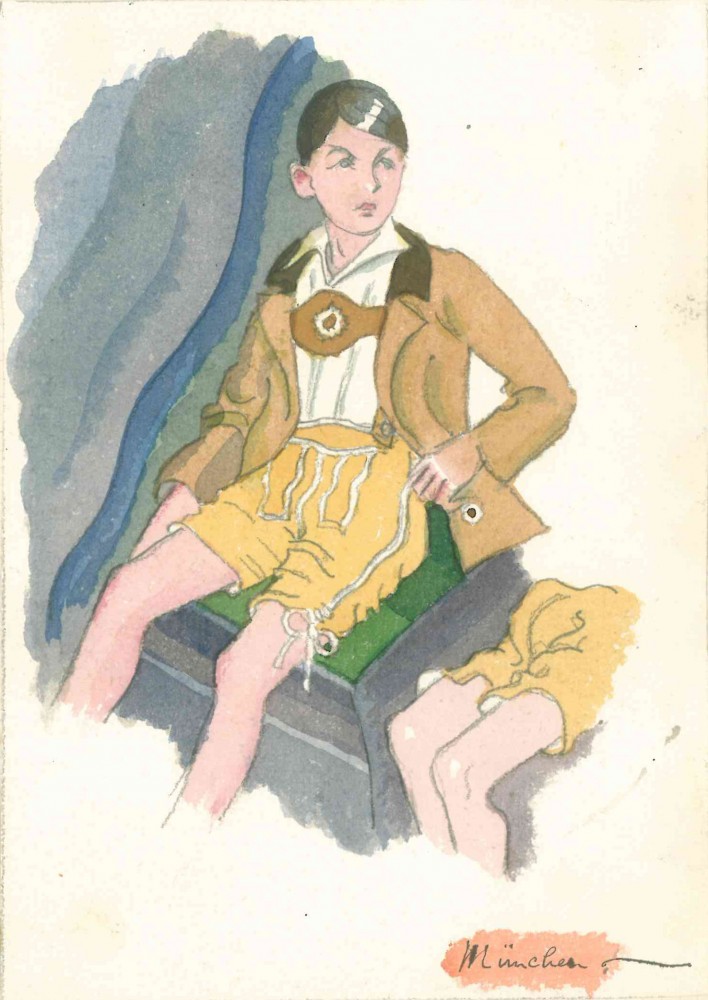
Albert Wainwright, Münchener Knaben
Nick Elm and Callum James have produced a fine monograph about Wainwright and his relationship with Otto Jübermann, a German boy he fell in love with while staying as a guest of his parents in 1927. Albert brought Otto back to England on a summer visit. Otto is the subject of many watercolours and sketches dating from the last few years of the twenties. The Portrait of Otto on the cover below is held by the Wolfsonian in Florida.

Albert & Otto, Callum James Books, 2013
The ink and wash sketch titled ‘Haus Jübermann’ below shows a bedroom, two chaste single beds with red coverlets, a sheepskin on the floor. All very rustic and gemütlich. Albert stayed at the Jübermann family home, in Veerssen near Uelzen, at least three times. He sketched the architecture, forests, sport activity and domestic scenes around him in rural Saxony.

Albert Wainwright, Haus Jübermann
Another sketch of the Jübermann home shows a one-storey timber-framed house with tiled roof and tall, small-paned windows – not a peasant house, more well-to-do as they say up north. Wainwright’s sketches of public buildings in Uelzen borrow somewhat from the style of German postcards, themselves renderings from period photos.
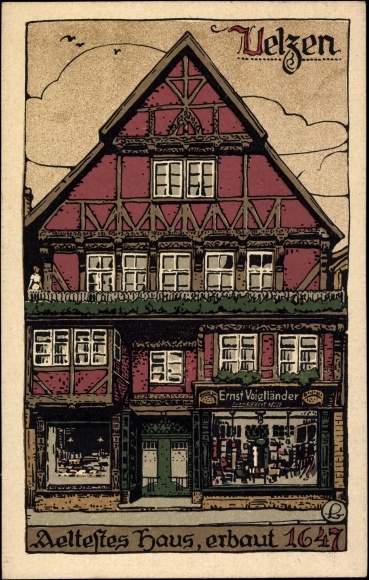
Altes Giebelhaus, Gudelstrasee, Uelzen
On later visits Wainwright travelled south to Munich and into Spain and Italy. Though there is no evidence that he ever crossed their tracks, he was part of that movement of English men – Auden, Isherwood and Spender – attracted by Weimar decadence and a lingering glance on the Ku’damm. The young form was never far from his gaze.
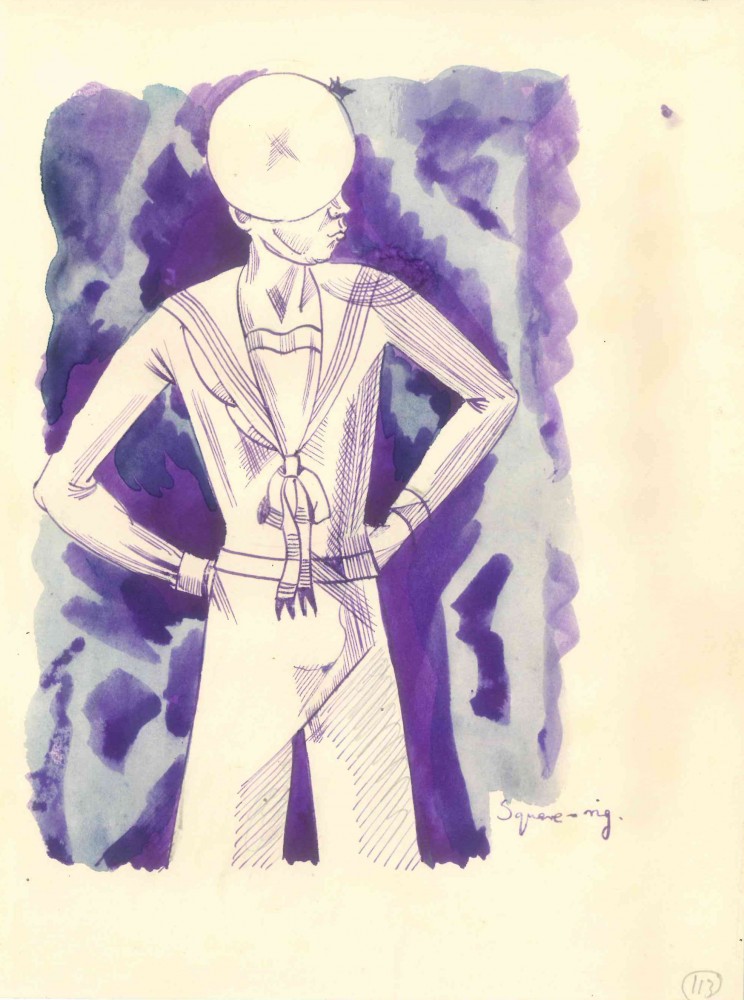
Albert Wainwright, Square Rig
He adorned his sketchbooks with quotations from German poetry and song. The inscription below is from Heinrich Heine, perhaps reflecting the thoughts of the young man drinking tea under the flag at the ship’s prow and staring at the youth by the deck rail:
Ich weiß nicht, was soll es bedeuten,
Daß ich so traurig bin,
Ein Märchen aus uralten Zeiten,
Das kommt mir nicht aus dem Sinn.
I cannot determine the meaning
Of sorrow that fills my breast:
A fable of old, through it streaming,
Allows my mind no rest.

Albert Wainwright, Rheinreise

Albert Wainwright, Rhoendorf am Rhein
As Europe moved towards war, Wainwright’s travels were curtailed. He kept a cottage and studio at Robin Hoods Bay, Yorkshire. His finished work has an elegance sometimes missing from the sketches. He was remarkably bold and sensual with the male form. Rucked shorts, clinging uniforms and a dishevelled lankiness are his trademarks. But in the portrait of Peter Wilkinson below there is a wonderful economy of means. As my old art teacher, Sister Trea, used to say: the spaces left empty are as important as the spaces filled.
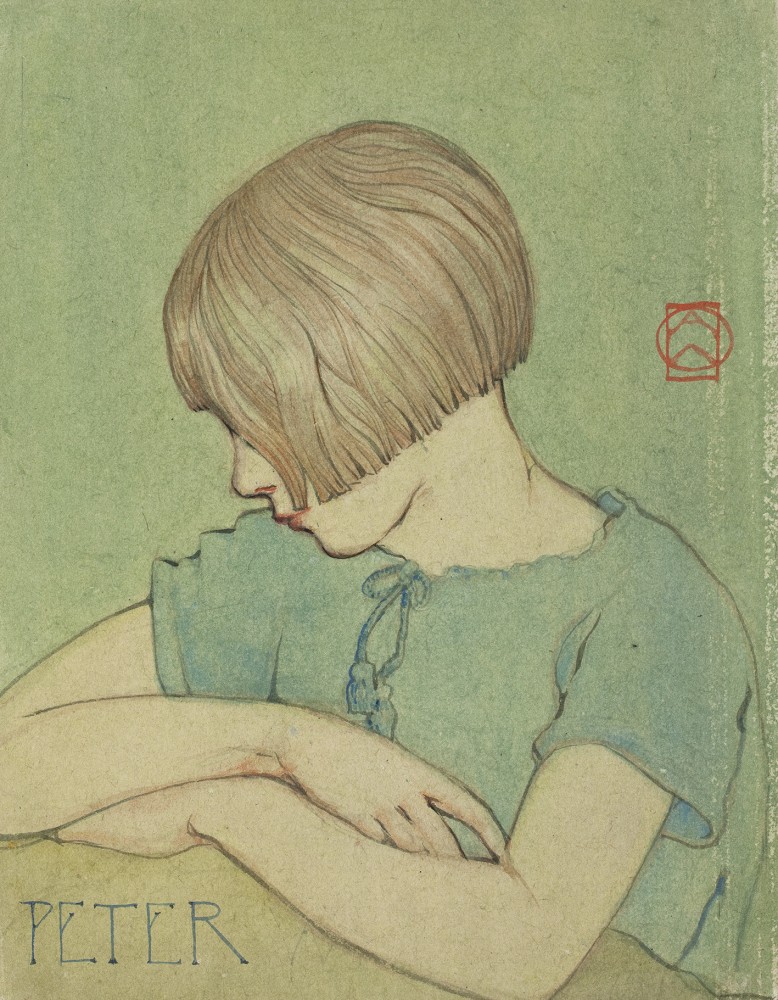
Albert Wainwright, Portrait of Peter Wilkinson, 1923
Wainwright clearly had been looking at more than the local Lederhosen on his trips through Germany. The Viennese Secessionists are a fruitful influence – Alphonse Mucha and Gustav Klimt, especially the Klimt of the square Attersee paintings of water and foliage. But in his approach to colour and the camber of a bum he anticipates that other northern boy who fell in love with the sun and a bigger splash – David Hockney.
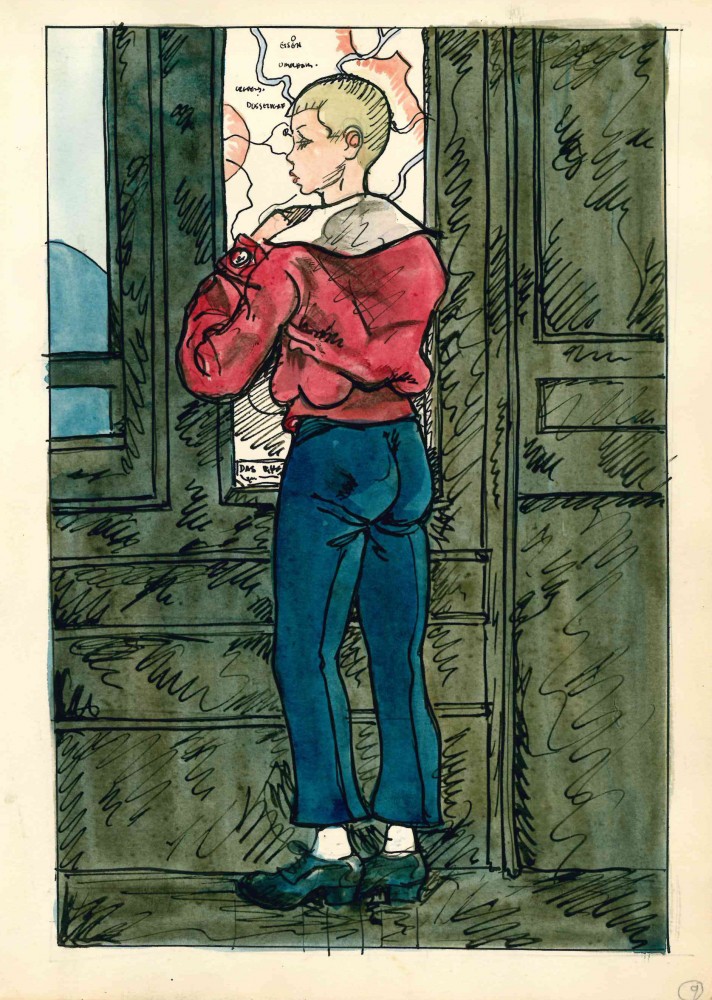
Albert Wainwright, The Blue Boy
In September 2013 the Hepworth Wakefield hosted an exhibition of Wainwright paintings and sketchbooks, drawing attention to the subtle bright quality of his work and to his neglected reputation. It was the first exhibition of his work in thirty years.
Wainwright died young, of meningitis, age 45 in 1943. Though retiring and unassuming, had he lived in our age he might not have survived its prurient puritanism. His colour and line have made it through nonetheless, a record of his Wanderjahre and his longing. His work deserves to be better known.


Albert Wainwright, Bavarian costumes

